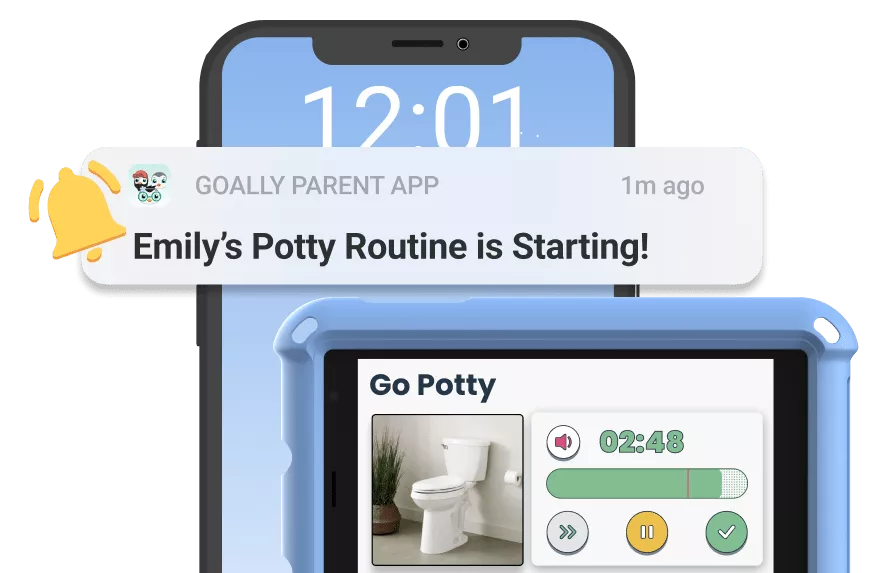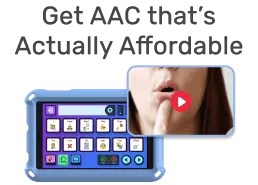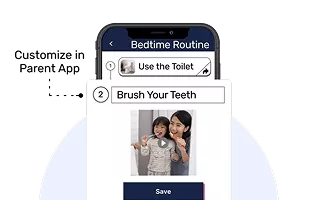Broken wrist syndrome refers to a repetitive hand-flapping gesture where the wrist is bent loosely, often seen in kids with sensory or motor processing differences. This article explores what it means, when it shows up, and how it relates to broken wrist syndrome autism.
Key Takeaways:
- Broken wrist syndrome is not a medical diagnosis but a visible motor pattern.
- It often shows up in neurodivergent kids, including those with autism.
- This behavior may serve as a self-regulation strategy or sensory expression.
- Parents should focus on function and communication, not just the gesture itself.
- Understanding context and triggers is key to support and response.
Table of Contents
What Is Broken Wrist Syndrome?
Broken wrist syndrome isn’t found in any medical textbook. It’s a casual label used to describe a very specific gesture: a loosely flexed wrist, typically accompanied by repetitive flapping or flicking. The movement is often seen when kids are excited, overwhelmed, or deep in focus. It’s most commonly linked to autism, but it’s not exclusive to it.
While the term may sound clinical, it’s important to remember it’s not a formal diagnosis. It’s simply a descriptive phrase that some use when observing kids with distinctive motor habits—often ones that look different from neurotypical movement patterns.
Broken Wrist Syndrome and Autism
Among neurodivergent kids, especially those with autism spectrum disorder, this kind of wrist movement is fairly common. That’s why many parents and educators associate broken wrist syndrome autism with stimming, or self-stimulatory behavior. Stimming includes any repetitive body movement or sound that helps kids regulate their feelings or manage sensory input.
In this case, the flapping or wrist bending may serve several purposes:
- Regulating emotions: Excitement, stress, or joy might prompt the movement.
- Processing sensory input: The movement provides proprioceptive feedback that helps the child understand their body in space.
- Communication: For some non-speaking or limited-verbal kids, these movements might signal internal states or needs.
Why Do Some Kids Move This Way?
The reason behind these movements can vary by child. It’s not always linked to autism, though that’s often where the association begins. Some kids with sensory processing disorder, anxiety, or developmental delays might also show similar behaviors.
What matters more than the label is understanding what the motion does for the child. For example, if a child flaps their hands when excited, it may simply be their way of expressing happiness. If the movement happens during stressful transitions, it might be a self-soothing tool.
When Parents Should Pay Attention
Not every movement is a cause for concern. However, patterns matter. If your child displays consistent hand flapping, wrist bending, or other repetitive movements, ask yourself:
- Is this behavior interfering with daily activities?
- Is it preventing social interaction or communication?
- Is it increasing in intensity or frequency over time?
- Is my child distressed if the movement is interrupted?
If the answer to any of these is yes, it might be helpful to consult an occupational therapist or developmental pediatrician. They can help identify whether the movement is part of a broader motor or sensory profile that needs support.
Stimming vs. Motor Challenges
Some wrist-related behaviors fall into the category of stimming. Others may stem from motor planning difficulties, where the brain has a harder time coordinating muscle movements. This is sometimes seen in dyspraxia, motor delays, or low muscle tone.
Understanding whether your child is stimming or struggling with coordination can shape the kind of help they need. An occupational therapist can distinguish between the two and recommend targeted interventions.
Should You Try to Stop It?
Here’s the honest truth: trying to stop stimming behaviors, especially those like wrist bending, usually backfires. These movements serve a purpose. They help kids calm down, focus, or navigate overwhelming moments.
Suppressing the behavior without offering a replacement can increase stress. Instead, observe the patterns. When does it happen? What helps? Support your child in finding other safe, comfortable ways to regulate—without punishing or shaming what their body naturally wants to do.
What You Can Do to Support Your Child
Start by tuning into your child’s unique rhythm. Every kid is different. Here are ways you can offer support if you’re noticing signs of broken wrist syndrome or similar motor behaviors:
- Document patterns: Track when and where the movement occurs.
- Check for triggers: Is your child reacting to noise, transitions, or excitement?
- Introduce calming tools: Try chewable jewelry, fidget toys, or weighted lap pads.
- Offer quiet breaks: Build sensory downtime into your child’s day.
- Validate the behavior: Say, “I see you’re flapping. Does that help you feel better?”
When to Consider Therapy
If the motor movement is frequent, intense, or seems to frustrate your child, therapy might help. Occupational therapists are trained to assess sensory and motor needs. They can teach replacement skills, offer sensory diets, or improve body coordination through play-based sessions.
Therapy isn’t about changing who your child is. It’s about giving them more tools to feel confident and safe in their body. For many families, therapy can improve focus, transitions, and emotional regulation—especially when sensory processing challenges are in play.
What Not to Do
Sometimes well-meaning adults try to stop stimming behaviors without realizing the harm. If your child is showing wrist-flapping or bent-wrist gestures, here’s what to avoid:
- Don’t punish or discipline the behavior.
- Don’t compare your child to others.
- Don’t assume they’ll “grow out of it.”
- Don’t interrupt without offering a supportive replacement behavior.
Kids with learning differences often pick up on shame, even if it’s unspoken. Support should feel safe—not like a spotlight on what makes them different.
How Educators and Caregivers Can Help
If your child is in school or daycare, loop in their teachers or therapists. Let them know about the movement and what you’ve noticed helps. A consistent approach across environments makes a big difference.
Caregivers can:
- Build movement breaks into the daily schedule.
- Allow quiet zones where kids can self-regulate.
- Normalize sensory behaviors among all students.
Understanding the Social Lens
One reason parents worry about behaviors like broken wrist syndrome is the fear of social stigma. Will other kids notice? Will adults misread the gesture? These concerns are real. But so is the value of advocating for inclusivity.
Teaching kids about differences—early and often—makes gestures like hand-flapping feel normal, not strange. And when your child sees that their body is accepted, their confidence grows.
When It’s Something More
Sometimes, repetitive wrist movements point to a broader neurodevelopmental condition. If your child also shows:
- Delayed speech or communication
- Challenges with social interaction
- Unusual response to sensory input
- Fixations on routines or intense interests
— then it might be worth exploring an autism evaluation.
Start with your pediatrician. Then consider an evaluation through a developmental specialist. Early screening tools like the M-CHAT can also guide the next steps.
Reframing the Behavior
What if we stopped labeling it as “broken” altogether? The term broken wrist syndrome may have stuck due to the look of the movement, but nothing about it is truly broken. Kids use their bodies in all kinds of ways to navigate their world. This is just one of them.
The goal isn’t to fix the movement. It’s to understand it. Once you know why it’s happening, you can decide what—if anything—needs to change.
Goally | Fun Games that Build Motor Skills & Manage Screen Time
Looking for ways to improve your child’s finger dexterity skills while also keeping screen time manageable? Try Goally’s fun & motor planning apps.
Our Balloons & Graffiti Street Apps are all about building motor skills in a fun, interactive way. Kids learn to “pop the balloons” or draw dozens of digital art designs while simultaneously developing the essential skills needed to use AAC and other communication tools. Meanwhile, Game Garage is a parent-controlled space filled with entertaining (but parent-controlled) video games that kids can unlock with the points they earn from completing routines.
Supporting your child doesn’t mean solving everything at once. Start with understanding. Ask questions. Try new tools. Work with professionals when needed. Most importantly, remember: your child is trying to communicate something. If we listen closely, their body often tells us exactly what they need.
Resources:
FAQs About Broken Wrist Syndrome
What is broken wrist syndrome in autism? Broken wrist syndrome is a term used to describe repetitive or self-stimulating behaviors in autistic individuals, such as twisting the wrist.
What causes broken wrist syndrome in autism? The exact cause is unknown, but it's often seen as a form of self-stimulation, coping mechanism, or response to overstimulation in autistic individuals.
How is broken wrist syndrome in autism managed? Strategies may include behavioral therapies, sensory integration techniques, and incorporating calming activities into daily routines.
Can broken wrist syndrome in autism be harmful? While typically not harmful physically, it might cause social challenges. However, each individual's experience can vary.
What are alternatives to self-stimulating behaviors like broken wrist syndrome in autism? Activities like using stress balls, listening to calming music, or engaging in therapeutic play can offer safe and productive alternatives.
Emily is a seasoned blog writer for Goally, leveraging her extensive background in child psychology and special education to provide valuable insights and resources for parents. Her commitment to understanding and addressing the unique needs of these children, combined with her expertise in educational strategies, makes her a credible and empathetic voice for families.






